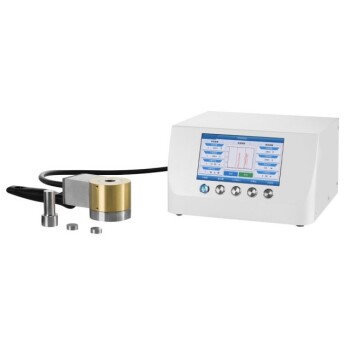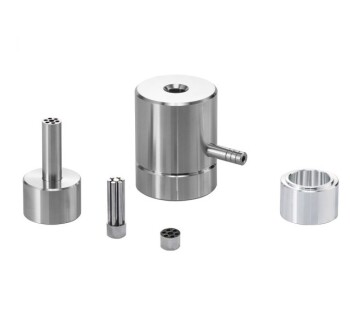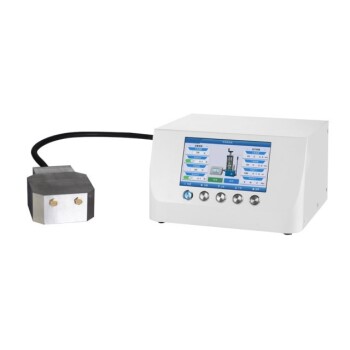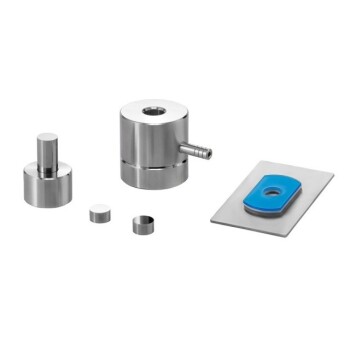While historically rooted in industrial tool manufacturing, direct hot pressing is now critical for producing advanced materials where maximum performance is non-negotiable. Recent applications focus on creating dense, high-performance composites for demanding sectors, including metal-diamond heat sinks for high-power LEDs and lasers, carbon-carbon composites for aerospace, and high-precision components like medical implants and turbine blades.
The core value of direct hot pressing has shifted from industrial tooling to enabling cutting-edge technology. Its unique ability to simultaneously apply high temperature and pressure is essential for creating near-perfectly dense composite materials that solve today's most extreme thermal and structural challenges.
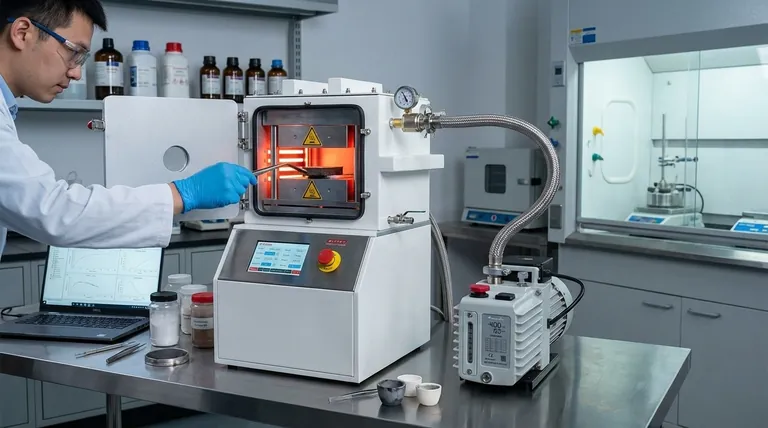
The Core Principle: Why Hot Pressing Remains Essential
Hot pressing works by simultaneously heating a material to a temperature where it becomes plastic or malleable while applying mechanical pressure. This combination forces the material particles together, eliminating voids and creating a dense, solid part.
Achieving Superior Material Properties
The primary benefit of this process is achieving near-full density. Unlike methods that leave residual porosity, hot pressing creates components with significantly enhanced mechanical strength, hardness, and thermal and electrical conductivity.
Enabling Advanced Composites
This technique is exceptionally effective for bonding dissimilar materials that would not fuse under normal conditions. It allows for the creation of metal matrix composites (MMCs) and ceramic matrix composites (CMCs) with tailored properties that surpass those of any single constituent material.
A Breakdown of Modern Applications
The fundamental advantages of hot pressing have unlocked its use in several high-stakes technology fields.
Thermal Management in Electronics
High-power electronics like advanced LEDs and laser diodes generate immense heat in a tiny area. Metal-diamond composite heat sinks, created via hot pressing, combine the structural integrity of metal with the unparalleled thermal conductivity of diamond, efficiently drawing heat away from sensitive components.
Aerospace and Automotive Structures
In aerospace, carbon-carbon (C-C) composites made by hot pressing are used for components like rocket nozzles and brake discs due to their incredible strength and stability at extreme temperatures. For automotive applications, MMCs provide a superior strength-to-weight ratio for high-performance engine or structural parts.
High-Precision Engineering Components
The ability to produce parts with tight dimensional tolerances makes hot pressing ideal for applications where precision is paramount. This includes manufacturing durable, biocompatible medical implants and complex turbine blades that must withstand intense operational stresses.
Research and Materials Development
On a smaller scale, laboratory hot pressing machines are indispensable tools for materials science. They allow researchers to rapidly prototype and test new formulations of powders, polymers, and composites, accelerating the development of next-generation materials.
Understanding the Trade-offs
While powerful, direct hot pressing is not a universal solution. An objective evaluation requires acknowledging its limitations.
Process Speed and Cost
Hot pressing is typically a batch process, which is inherently slower and more labor-intensive than continuous mass-production methods. The cycle time for heating, pressing, and cooling a single part or a small batch can be significant, leading to a higher cost per component.
Geometric Limitations
The process is best suited for producing parts with relatively simple geometries, such as discs, blocks, or cylinders. Complex, intricate shapes with undercuts or internal cavities are difficult or impossible to form directly and would require extensive and costly post-process machining.
Tooling and Material Constraints
The dies and punches used in hot pressing must withstand extreme temperatures and pressures. This necessitates the use of expensive, highly durable materials like graphite or ceramic composites, adding to the overall cost and complexity of the operation.
Making the Right Choice for Your Goal
Selecting the correct manufacturing process depends entirely on your project's primary objective.
- If your primary focus is maximum material performance and density: Hot pressing is the superior choice for creating components with the highest possible strength and thermal conductivity.
- If your primary focus is producing complex shapes at low cost: You should explore alternative methods like powder metallurgy, metal injection molding (MIM), or additive manufacturing.
- If your primary focus is developing novel composite materials: A laboratory-scale hot press is an essential tool for research and rapid prototyping of new material systems.
Understanding these capabilities and constraints allows you to strategically leverage direct hot pressing for applications where ultimate material performance is the critical factor for success.
Summary Table:
| Application Area | Key Materials | Primary Benefits |
|---|---|---|
| Thermal Management | Metal-diamond composites | High thermal conductivity, efficient heat dissipation |
| Aerospace & Automotive | Carbon-carbon composites, MMCs | Extreme temperature stability, strength-to-weight ratio |
| High-Precision Engineering | Biocompatible alloys, ceramics | Tight tolerances, durability for implants and blades |
| Research & Development | Powders, polymers, composites | Rapid prototyping, accelerated material innovation |
Ready to elevate your laboratory's capabilities with advanced hot pressing solutions? KINTEK specializes in lab press machines, including automatic lab presses, isostatic presses, and heated lab presses, designed to meet the demanding needs of research and production in fields like electronics, aerospace, and medical devices. By partnering with us, you'll achieve superior material density, enhanced performance, and faster innovation cycles. Don't let process limitations hold you back—contact us today to discuss how our tailored equipment can drive your projects to success!
Visual Guide

Related Products
- Heated Hydraulic Press Machine with Heated Plates for Vacuum Box Laboratory Hot Press
- Automatic High Temperature Heated Hydraulic Press Machine with Heated Plates for Lab
- Automatic Heated Hydraulic Press Machine with Hot Plates for Laboratory
- Laboratory Manual Heated Hydraulic Press Machine with Hot Plates
- Heated Hydraulic Press Machine With Heated Plates For Vacuum Box Laboratory Hot Press
People Also Ask
- Why is a hydraulic heat press critical in research and industry? Unlock Precision for Superior Results
- What is a heated hydraulic press and what are its main components? Discover Its Power for Material Processing
- What role does a heated hydraulic press play in powder compaction? Achieve Precise Material Control for Labs
- How is a hydraulic heat press used in laboratory sample preparation? Create Uniform Samples for Accurate Analysis
- What is a hydraulic hot press machine and how does it differ from a standard hydraulic press? Unlock Advanced Material Processing










